This post may contain affiliate links. Please read our disclosure policy. As an Amazon Associate, I earn from qualifying purchases.
A couple months ago I was shopping at Central Market and as I strolled through the deli section I noticed a display of cheese on a cheese board and a lady was serving samples of cheddar cheese cubes on toothpicks with a cube of what looked like very firm jelly. She told me that it was pear paste.
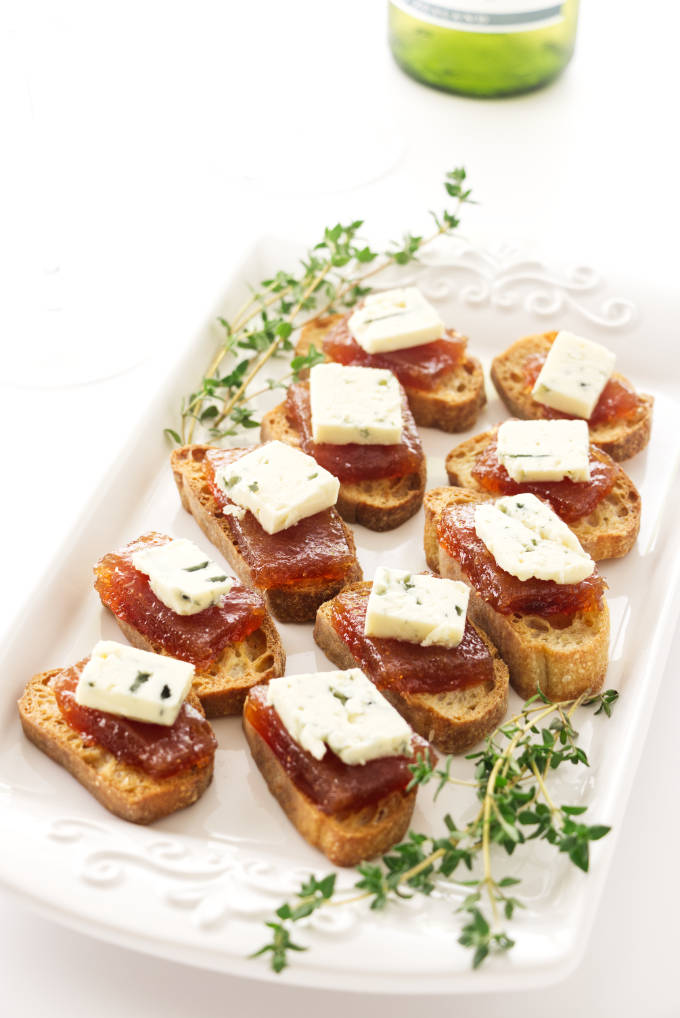
The combination was delicious and as I examined the pear paste package a light went off in my head as I realized I had a package of the same stuff at home. My package was quince paste and it had been included in the annual Christmas basket from Burl. We had not even opened it as it was unfamiliar and, truthfully, it did not sound very exciting.
When I returned home from shopping I hunted down that package of quince paste, opened it up and tasted it with blue cheese on a cracker.
I did a little research on quince paste and discovered that it is very popular in Spain so I dug out my book, The Foods of Spain by Claudia Roder and there was a recipe for quince paste, also known as membrillo. But, I wanted pear paste and still had four or five pears sitting on the counter top and I almost always have blue cheese which really goes well with pears.
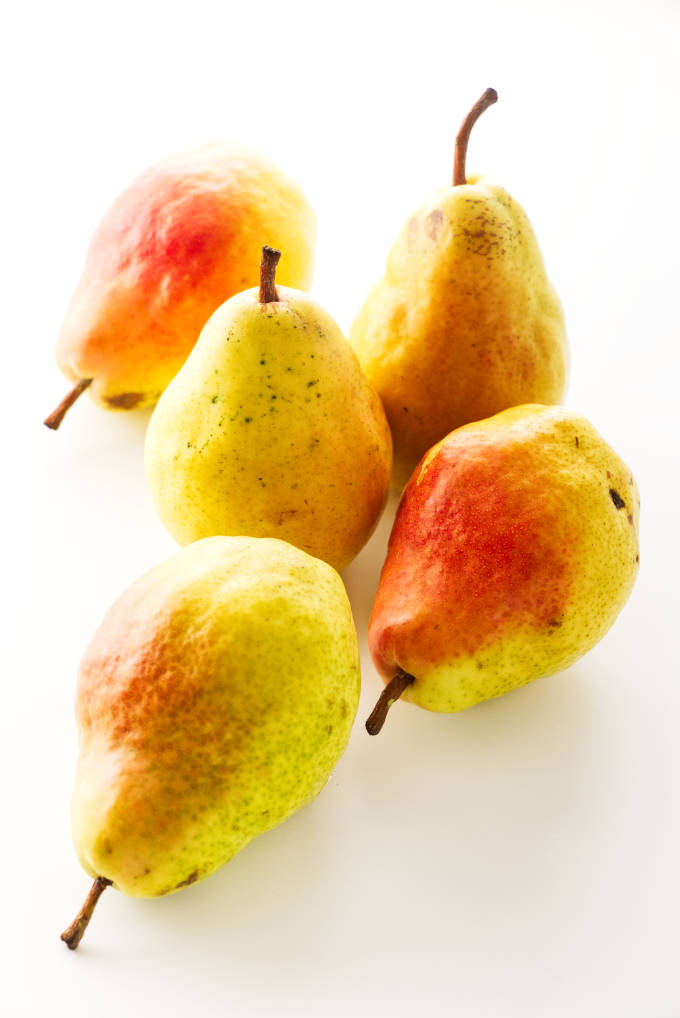
This recipe has been adapted from my, The Foods of Spain cookbook and London Eats and it is a small batch using only four pears.
Pears are a little low in pectin and I added liquid pectin to boost the gel factor a bit to ensure that it set up well. It didn’t take long to peel, core and poach the pears but the cooking part, on a simmer, was slow and I had to force myself to be patient until it was really thick.
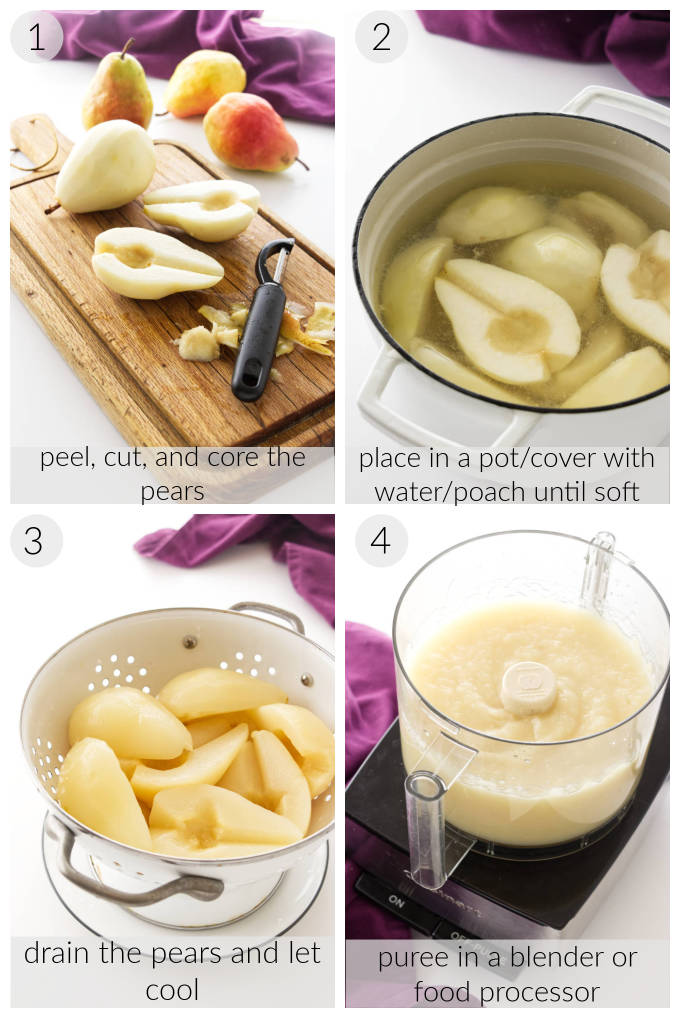
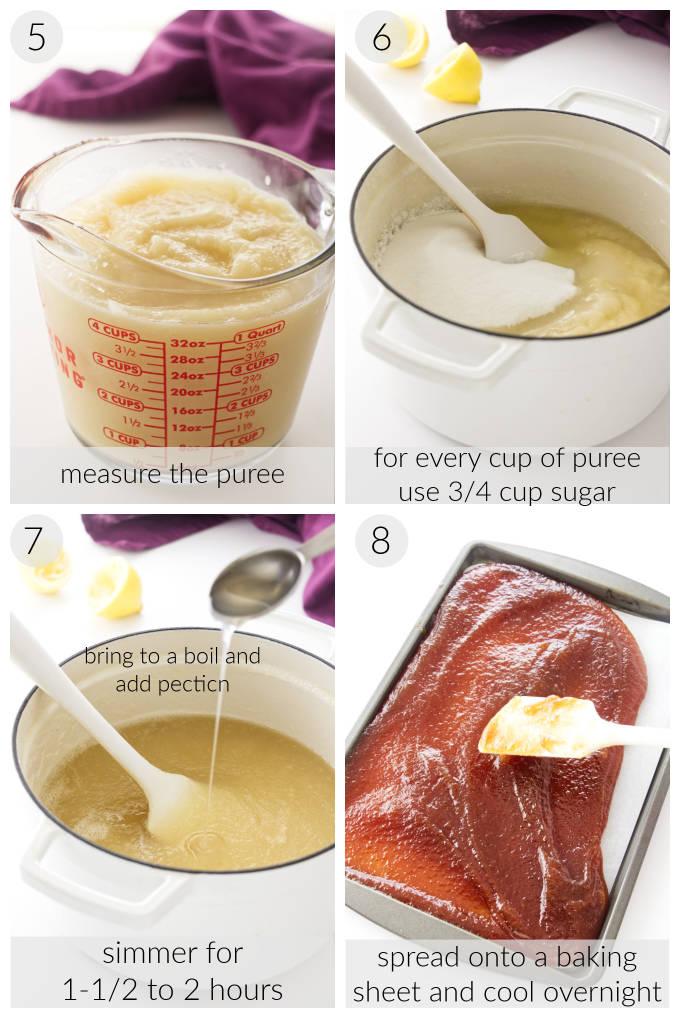
When it was finally so thick that a spoon left a mark on the bottom of the pan that didn’t immediately cover over, I poured it into a small sheet pan that I had lined with parchment paper, smoothed it out to about a 1/4-inch thickness and let it cool and firm up overnight.
The pear paste was set and firm the next morning and I sliced it, right through the parchment paper, into sections that would fit and store in a plastic container.
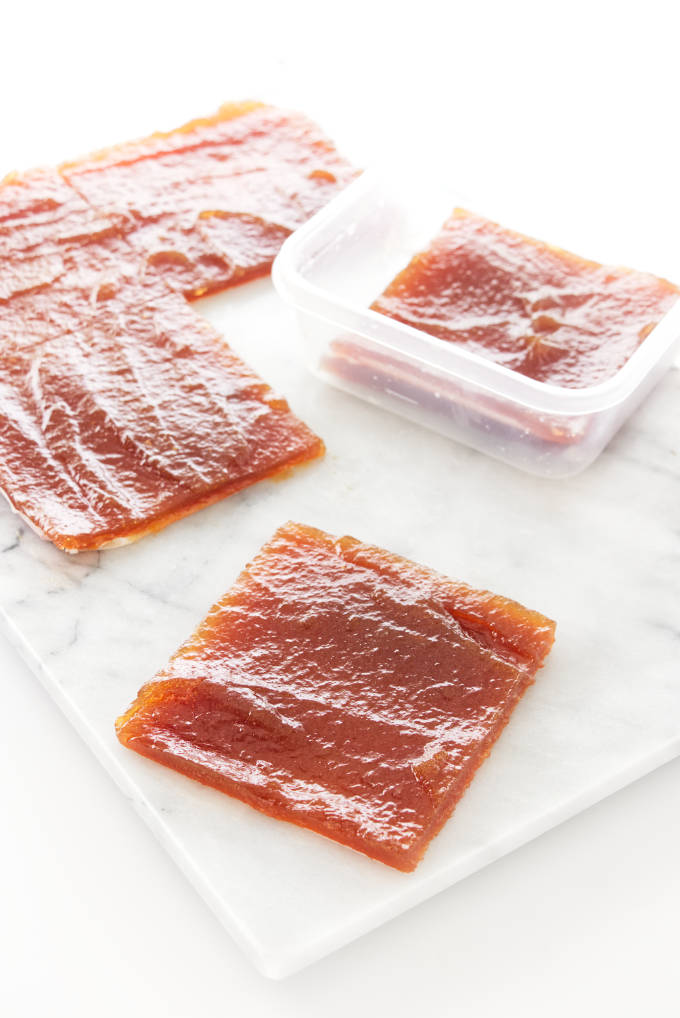
The sections stacked nicely with the parchment paper dividing each section. Later that evening, Don and I cracked open a nice cold bottle of sauvignon blanc wine and we enjoyed our appetizers of pear paste with blue cheese and crackers. Oh, so good….you must make this pear paste and blue cheese appetizer.
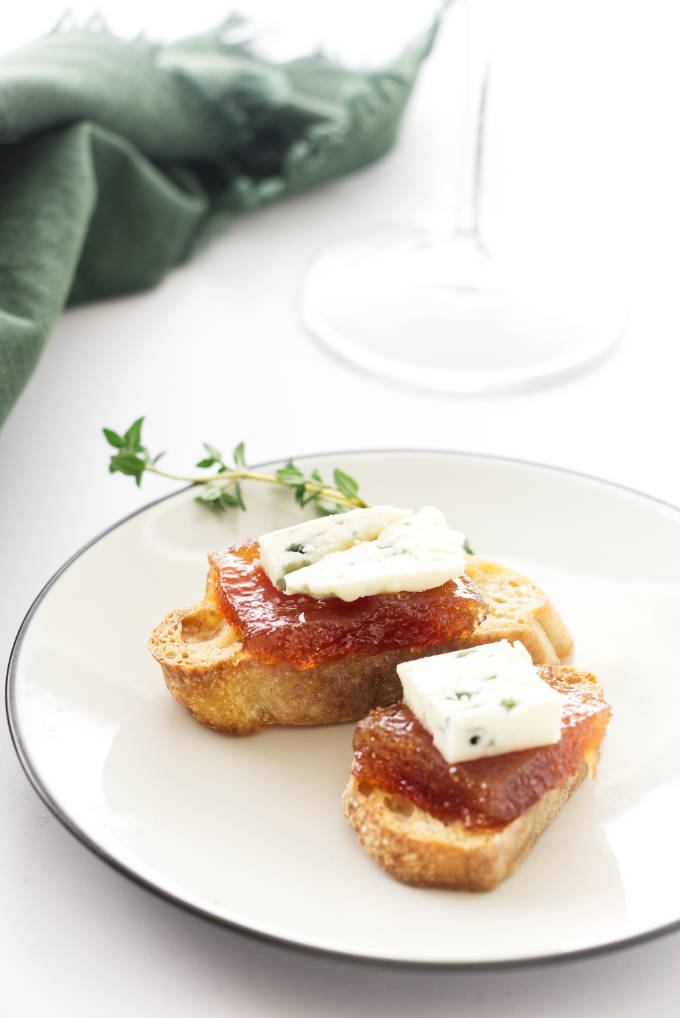
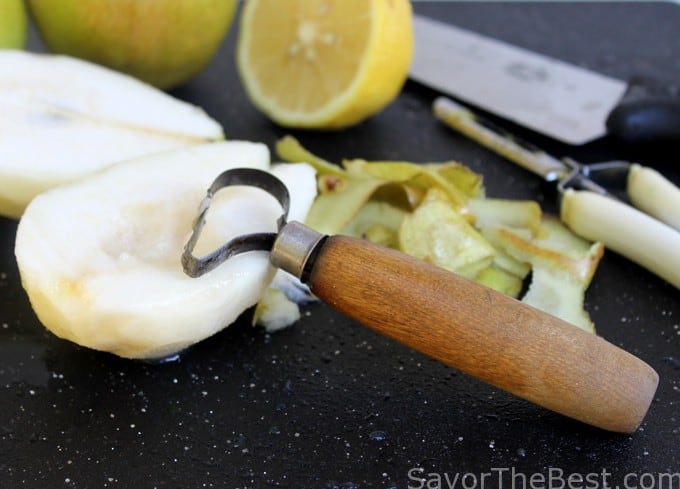
In the early 1970’s when I was going through my ‘home canning’ phase, my mom gave me her old pear coring tool that she had for years. It is getting a little bit loose and wobbly now after so much use but it sure does a good job with these pears.
Pin this now to find it later!
Pin It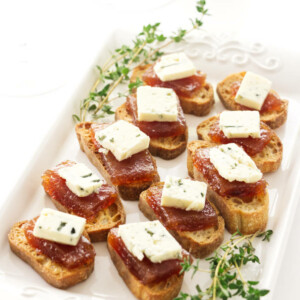
Pear Paste
If you make this recipe, please leave a star rating and comment.
Ingredients
See Notes below:
- 4 pears, about 3¼ pounds
- 1½ to 2 cups granulated sugar, 300 to 400 grams; this will vary according to the amount of pear puree
- 2 tablespoons fresh lemon juice
- 2 tablespoons liquid pectin, See Notes for substituting powdered pectin
Instructions
- Wash and peel the pears, cut in half and remove the core and pit from each one and place in a large saucepan with enough water to cover them. Over medium-high heat, bring the water to a boil then reduce the heat to simmer and poach the pears until they are slightly softened.
- Place the poached pears in a colander to drain and allow them to cool for 10 or 15 minutes. Add the cooled pears to your blender or food processor and puree them. Measure the pear puree and add to a heavy-bottomed wide skillet or dutch oven
- For every 1 cup of puree you need to add ¾ cup of sugar. Add the lemon juice to the puree and sugar, stirring to dissolve the sugar and bring to a boil over medium-high heat. Boil for one minute, then reduce the heat to a simmer and add the liquid pectin. Continue simmering the mixture, string frequently. The mixture will gradually get to be very thick and turn a dark orangey color. This will take about one-and-a-half to two hours and when you can pull a wooden spoon through it and it leaves an open streak on the bottom of the pan that takes a few seconds to fill in, remove it from the heat.
- Pour the hot mixture into a prepared 13x9x½ size baking sheet that has been lined with parchment paper. Smooth it out evenly in the pan and allow it to cool overnight. It should be about ¼-inch thick.
- Divide the pan of pear paste into sections, do not remove the parchment paper, and stack each section into a storage container that has a lid. Add a piece of parchment paper to the top and cover with the container lid. This will keep in the refrigerator for several months, very similar to a jar of jelly.
- When ready to serve, remove as many sections as needed and cut into the shape/size of your crackers and serve with cheese.
Notes
- Do not double the recipe for pear paste but make two separate batches
- Liquid pectin and powdered pectin can be interchanged, however, the measurements are not the same. Using a conversion rate of 4 tsp. of powdered pectin for every 2 tbsp. of liquid pectin required.
- Combine powder pectin with the fruit and juice at the beginning of the recipe but do not add the sugar at the same time. Bring fruit and pectin to full boil for 1 minute. Then add the sugar and stir until completely dissolved. Continue with recipe.
Nutrition
Nutrition information is automatically calculated, so should only be used as an approximation.
 Like this recipe? Rate & comment below!
Like this recipe? Rate & comment below!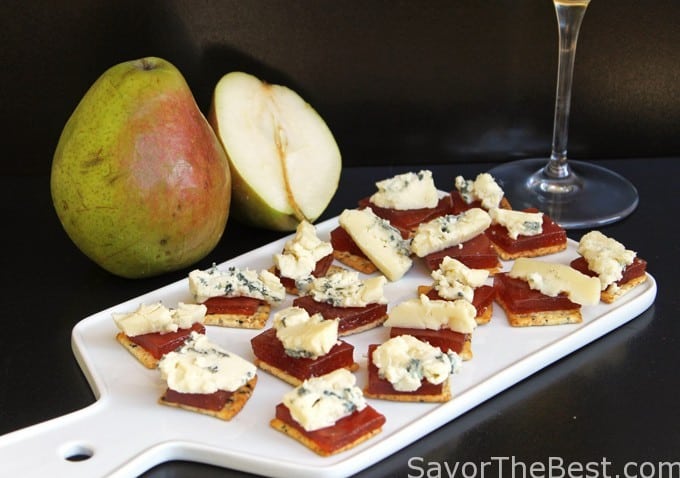
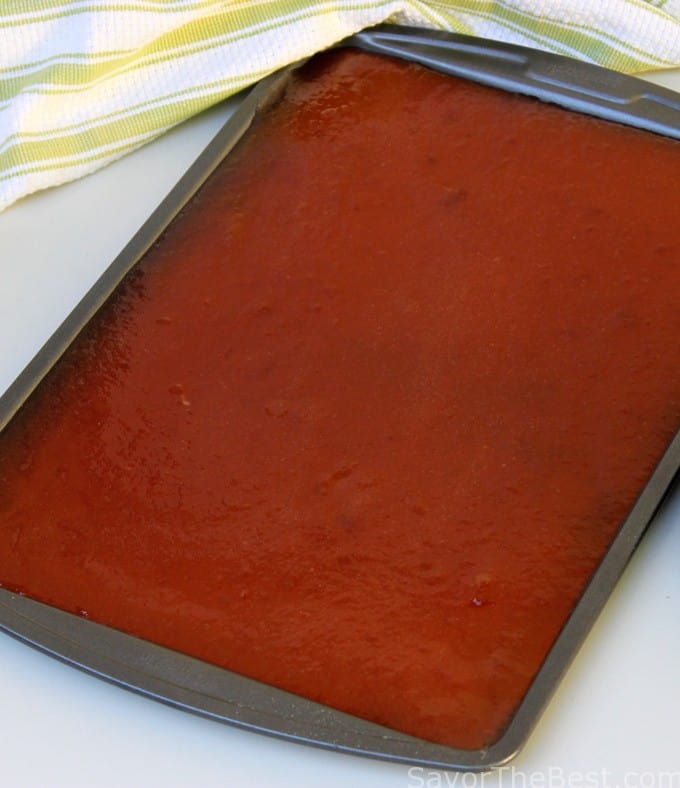
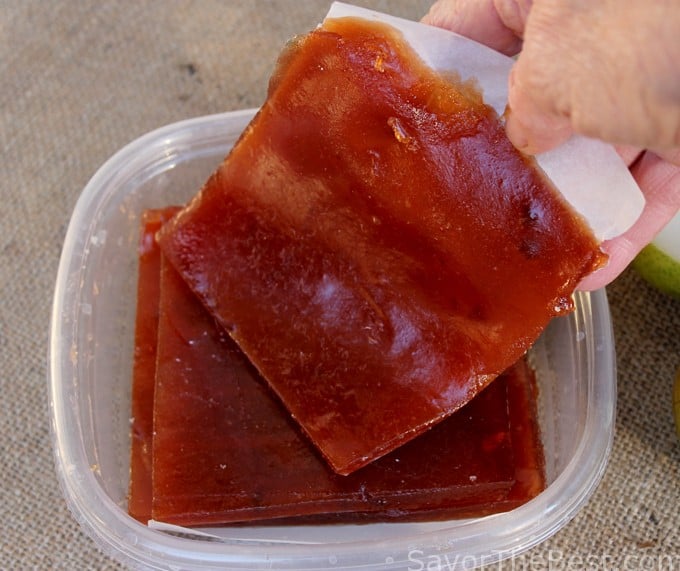
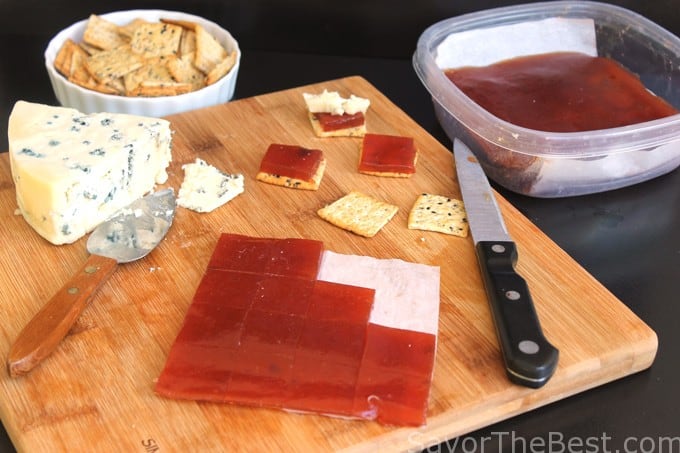
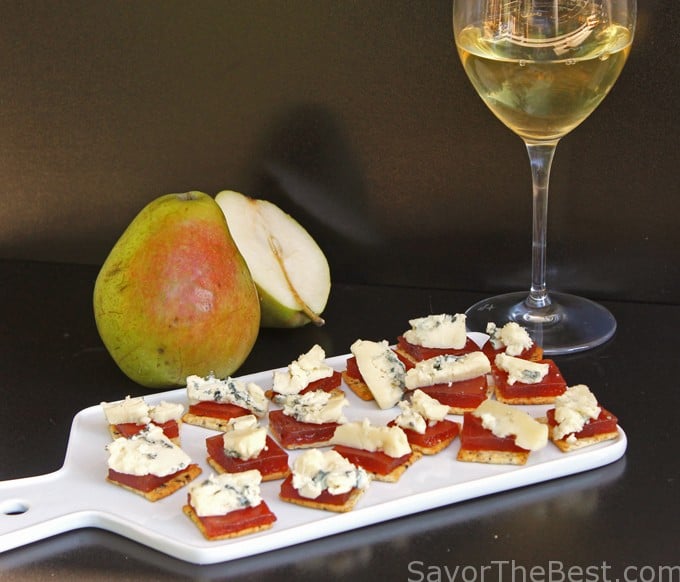

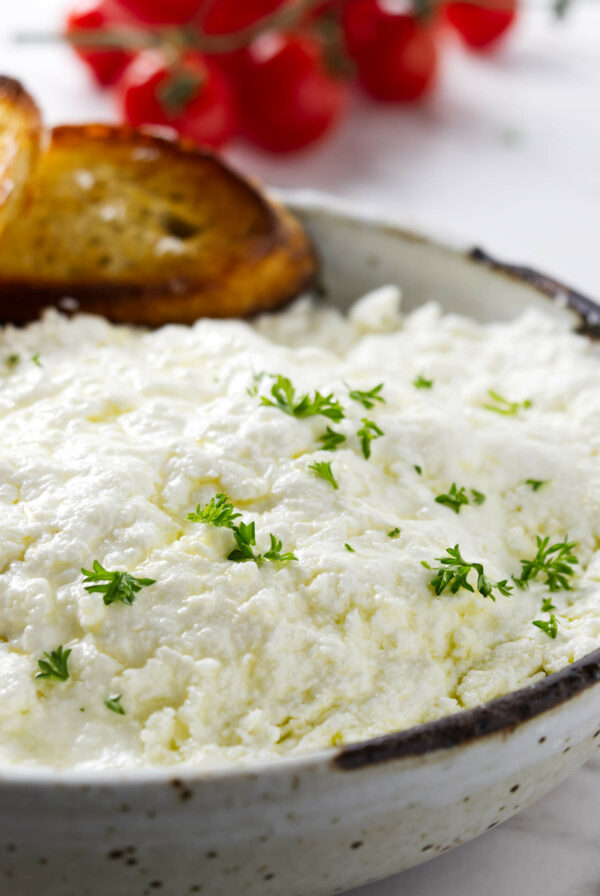
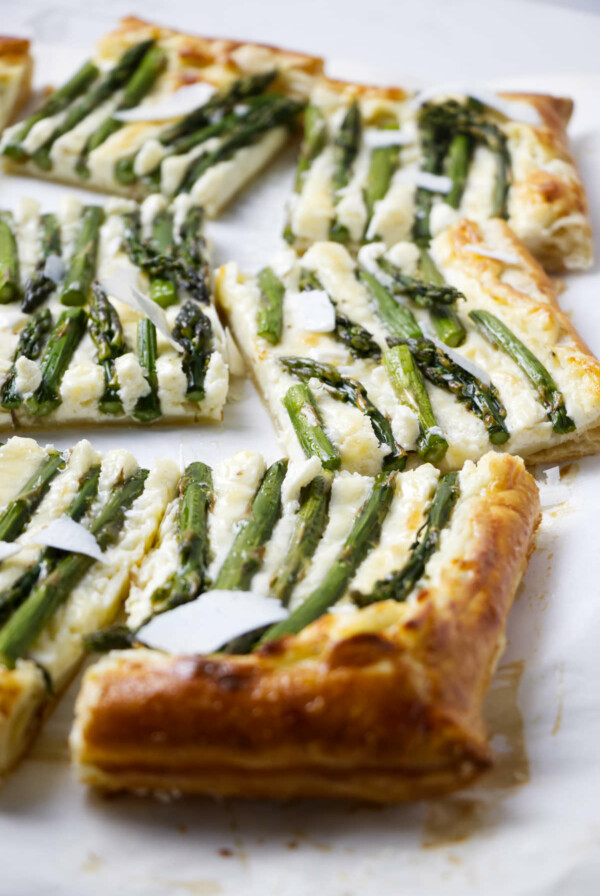
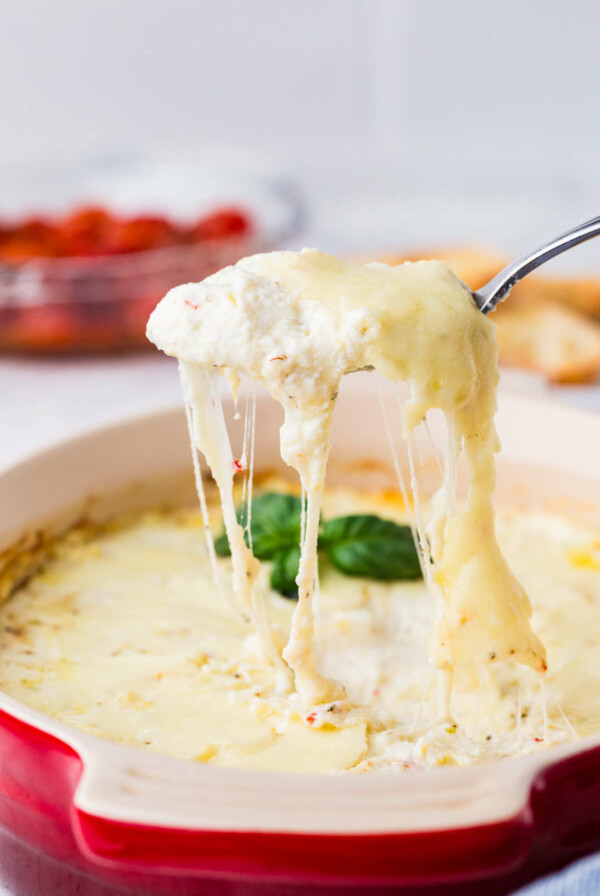
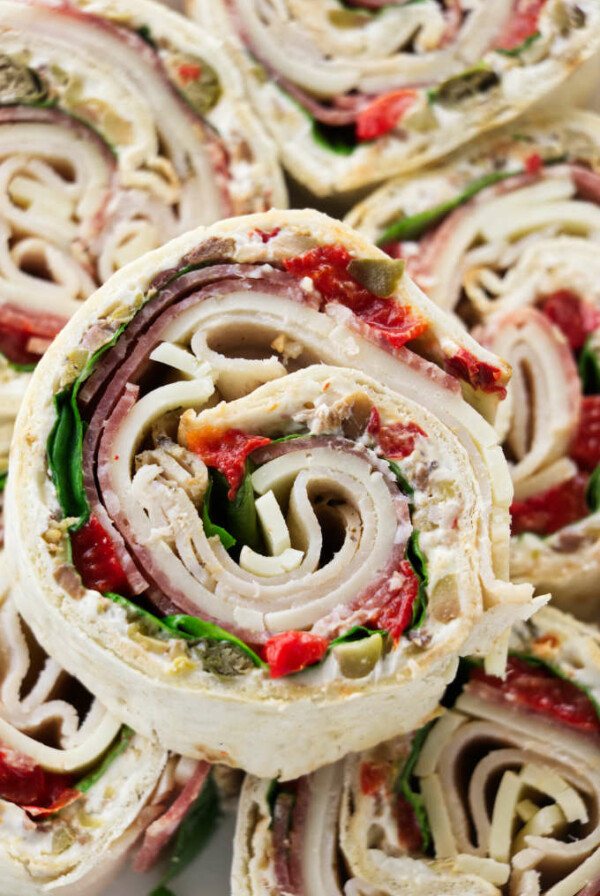










Just three lil words..
Yum! Yum! Yum!
I’m working on some nectarine paste just now..♡ Thanks, Pat. Pears are my favorite..
Thanks for the sweet note. Pear lovers unite.
Hi Pat,
Just wondering if this same recipe could be made with other fruit? Eg:Mangoes I’ve seen it in stores and am unable to find a recipe anywhere for Mango paste
Kim, that sounds fabulous! Fruit paste can be made from a variety of either fresh or dried fruit. Here is a link that should be helpful. I have only made pear paste but I have purchased and tasted quince paste and it is made in the same manner. I am pretty sure that the pear paste recipe could be adapted by substituting the same amount of mango. I recommend that you give the mangos a try and would love to hear back from you on how it goes. Thanks so much for contacting us with your questions.
Made this tonight with gifted pears that fell during a storm. They were bruised and some were really mushy so this was a perfect recipe to experiment with. I peeled and chopped them so they poached quickly, then used my stick blender to puree (too lazy to wash the food processor). I used 4 cups of puree in one batch, the sugar ratio as described, 8 tablespoons of bottled, high quality, lemon juice instead of fresh, and a whole box of regular Sure-Jell. It took about 1 1/2 hours on low heat (gas stove) in a hard anodized, wide sauté pan and looks perfect. One warning…it pops like crazy so wear long sleeves!
Thanks for the comment. It’s a great way to use bruised pears
This looks perfect! I was just wondering if there was a way of cooling it straight in a jar as I am hoping to make this as a gift and was thinking of the best way to present it! Thanks 🙂
Oooh, Katie….that will make a wonderful gift! Yes, I believe you can do that, I have not poured this into jars but have seen it sold in store in jars. It also looks lovely in the small molds found in craft stores! I would love to hear back from you on your project. Thank you so much for comments and questions. You inspired me to make another batch of this pear paste ?
Hi Pat, thanks so much for getting back to me! I finally got round to making it yesterday and it turned out great! I poured it straight into a small kilner jar and it’s all set and looks fab, I wish I could attach a picture.
Thanks again for the recipe ☺️
Oh, that is great, Katie! I am so pleased that this worked for you, I bet they look fabulous in those little kilner jars and will make wonderful gifts! Thank you so much for your great review and Merry Christmas to you and your family!
Hi Pat,
I guess I’ll be making this paste for the next week as I have 25 cups of puree to deal with!!! :):)
Ciao Marisa
Holy Moly, Marisa! That is a LOT of pear puree! No wonder you asked about doubling the recipe for pear paste. Maybe you can freeze part of the pear puree to make another time?
I’m dying to try this recipe, but I would like to know how many cups of puree did you end up with your 4 large pears.
And may I also ask why you suggest not doubling the recipe?
Many thanks
Hi, Marisa….thanks for you comments and questions on this pear paste recipe. You should end up with 2 to 2-1/2 cups of pear puree. This will depend on the size of your pears. It is important to measure the puree in order to determine the correct amount of sugar needed. With reference to your question on doubling the recipe…I learned many years ago from my mom when making jam/jelly, that if the ingredients are doubled the cooking process will be much longer, leading to an over cooked, rubbery product that often begins to scorch or burn. I hope this answers all your questions. I would love to hear how your pear paste turns out. Thanks again for contacting us for clarification. 🙂
Thank you so much for your help. I will be making the paste today and will let you know how it turns out. Have a great day.
Ciao Marisa
Thank you, Marisa….I look forward to hearing from you.
I’ m dying to make this paste but I can t find the liquid pectin where I live (Italy). I’ve read that dry and liquid are not interchangeable.
Can you help me with this issue?
Thank you so much.
Adela
Hi, Adela…Thanks for this great question! I confess that I was unaware of the difference between liquid and dry pectin and had to do a little research. According to gettystewart.com they can be substituted but the measurements are not the same and when they are added to the puree is not the same. According to the website information….to make the substitution for our recipe you would use 4 TEASPOONS (16 grams) of powdered pectin. You should combine the powdered pectin with the pear paste but do not add the sugar. Bring the mixture to a full boil for one minute THEN add the sugar and continue with the recipe.
leaf.tv/articles has the following measurement substitutions:
Determine how much liquid pectin is required for your recipe.
Convert this amount to tablespoons if it is listed in teaspoons (3 tsp. equals 1 tbsp.).
Calculate how many teaspoons of powdered pectin to substitute for the liquid version, using a conversion rate of 4 tsp. of powdered pectin for every 2 tbsp. of liquid pectin required. Measure out and add the correct amount of pectin powder to your recipe.
Thanks again for this question..Now I know!?
I am sorry I didn’t see your reply before writing again my question. . I thoght it had been lost..
Thank you for taking your time to search this.
I will make it and will let you know how it went.
Thanks again.
Adela
Hi, Adela….I look forward to hearing how the dry pectin substitution works for you.
Thanks for the recipe. I made this last night… mine didn’t darken as much but got thick enough that I needed to pour it. It did set-up fine and early taste tests are all positive. I also didn’t poach my pears as they were already super ripe… that may have contributed to not getting the depth of color??
Now off to the store to find some great blue cheese!
Hi, Andrew….This pear paste really is good stuff isn’t it? Yes, I am sure you are correct on the pears being very ripe, another factor that it didn’t darken may be it could have been cooked at a tad higher heat setting. I’m glad it was a success! Thanks for the feedback comments. 🙂
I’ve made quince paste before but never pear paste. It’s a lot easier to find pears and I love pears and blue cheese. It’s a combination made in heaven.
Thanks, Maureen…..this takes a little time but they keep in the frige forever and are handy for quick appetizers. And, I like the pear paste much better than quince paste. 🙂
Thank you for your comments…great tip!